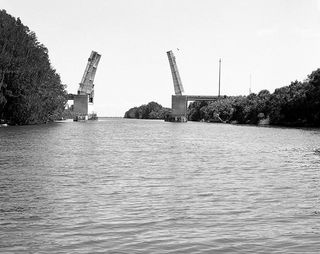Mosquito Lagoon Water Body
28 mile long Mosquito Lagoon covers 38,000 acres of submerged land.
About
The Mosquito Lagoon is bounded on the north by Volusia County's Ponce de Leon Inlet, on the west by Merritt Island National Refuge, on the west by Canaveral National Seashore, and on the South by Kennedy Space Center. The lagoon is the least developed area remaining on Central Florida's East Coast. Two thirds of Mosquito Lagoon is protected by the U.S. Fish and Wildlife Service (FWC) and NASA. The northern end of Mosquito Lagoon is protected under Florida's Department of Environmental Protection (FDEP) Aquatic Preserve program.[1]
Merrit Island National Wildlife Refuge
The refuge traces its beginnings to the development of the nation’s Space Program. In 1962, NASA acquired 140,000 acres of land, water, and marshes adjacent to Cape Canaveral to establish the John F. Kennedy Space Center. NASA built a launch complex and other space-related facilities, but development of most of the area was not necessary. In1963 the U.S. Fish and Wildlife Service signed an agreement to establish the refuge and in 1975 a second agreement established Canaveral National Seashore. Today, the Department of Interior manages most of the unused portions of the Kennedy Space Center as a National Wildlife Refuge and National Seashore.
The Canaveral National Seashore is home to more than 1,000 plant species and 310 bird species. CANA occupies 57,662 acres (23,335 ha)[1] (including lagoons). The park's 24-mile-long beach is the longest undeveloped beach on the east coast of the state. The southern part is also known as Playalinda Beach, the middle section as Klondike Beach, and the northern section as Apollo Beach.
